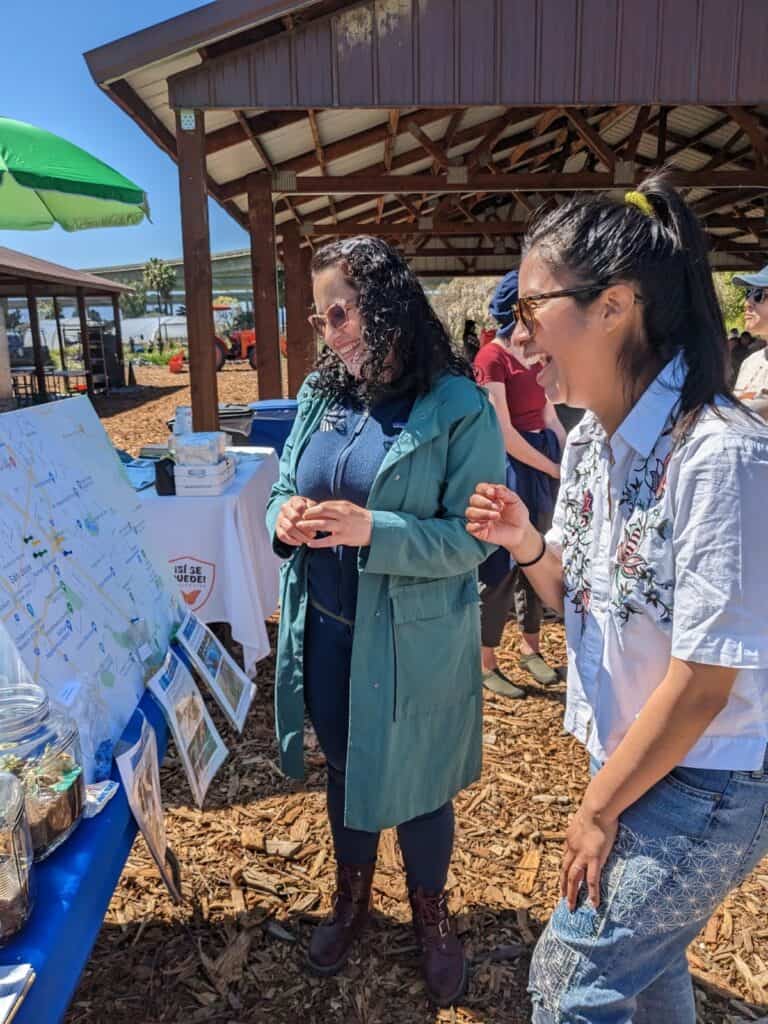As this year’s atmospheric river storms have shown, flooding in the Bay Area doesn’t just stop at the shoreline, but also impacts inland neighborhoods. When creeks overflow, storm drain systems get overwhelmed, or rain pools in low-lying areas, the resulting flooding can impair daily activities and damage homes. This is especially true in East San José, a historically underinvested neighborhood, where several exposed creeks leave surrounding areas at risk of flooding as climate change causes water levels to rise and storms to intensify.

On April 1, 2023, Save The Bay tabled at Veggielution’s community farm stand in East San José. Alongside a Spanish interpreter from Plastic Free Future, we spoke with community members about flooding in their neighborhoods and the importance of green stormwater infrastructure in mitigating flooding. We invited folks to indicate where they have experienced flooding in East San José over the past few years by placing pushpins on a map of the area. Color-coded pushpins represent instances of minor, moderate, or major flooding. Minor flooding is flooding that doesn’t cause permanent damage but may be an inconvenience. Moderate flooding causes some inundation of structures, and major flooding causes extensive inundation and may require evacuation.1 There are many areas in San José where the flood hazard is undetermined, so community input helps educate city staff about where improved stormwater infrastructure is most needed.
Where Is There Flooding?
About half the people we spoke to had experienced flooding in East San José. Many of the flooding instances were observed on or under highways, such as the 280, 87, and 101 highways shown above. Another cluster of flooding was observed near Coyote Creek. Several people remembered the major flooding that occurred when Coyote Creek overflowed in 2017, forcing hundreds to evacuate from their homes. Luckily, those we spoke to did not experience any major flooding during this year’s atmospheric river storms. However, major flood events like we saw in 2017 are likely to become more common as climate change advances.
Demonstrating Solutions: Green Stormwater Infrastructure
In addition to asking people where they experienced flooding, we also spoke to them about a possible solution: green stormwater infrastructure (GSI). Green stormwater infrastructure replaces impermeable surfaces like asphalt and cement with vegetated spaces that capture water and direct it into the city’s stormwater system. An added benefit of GSI is that it can help combat the urban heat island effect, which East San José residents identified as a key concern in a workshop we held in 2021.
As urban heat and flooding worsen due to climate change, we will need more GSI to help build cities’ resilience. Save The Bay will be working with San José and other Bay Area cities to accelerate the funding and implementation of green stormwater infrastructure.

















































